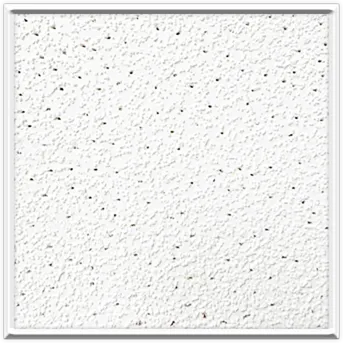- Afrikaans
- Albanian
- Amharic
- Arabic
- Armenian
- Azerbaijani
- Basque
- Belarusian
- Bengali
- Bosnian
- Bulgarian
- Catalan
- Cebuano
- Corsican
- Croatian
- Czech
- Danish
- Dutch
- English
- Esperanto
- Estonian
- French
- German
- Greek
- Hindi
- Indonesian
- irish
- Italian
- Japanese
- Korean
- Lao
- Malay
- Myanmar
- Norwegian
- Norwegian
- Polish
- Portuguese
- Romanian
- Russian
- Serbian
- Spanish
- Swedish
- Thai
- Turkish
- Ukrainian
- Uzbek
- Vietnamese
Nov . 07, 2024 12:12 Back to list
Options for Ceiling Hatch Designs and Their Practical Benefits
The Importance and Functionality of a Hatch in Ceilings
When it comes to architectural design, the details often make a significant difference in both functionality and aesthetics. One such detail, often overlooked yet immensely important, is the hatch in ceilings. This seemingly simple feature plays a crucial role in building design, facilitating access for maintenance, inspection, and sometimes even for ventilation.
Understanding the Hatch
A hatch in the ceiling is essentially a small access door built into the ceiling structure that allows individuals to enter and exit areas above, such as attics, ceilings, or concealed spaces. While they may appear as mere openings, these hatches are strategically designed for various practical purposes ranging from utility access to safety considerations.
Maintenance and Accessibility
One of the primary functions of a hatch in the ceiling is to provide access for maintenance personnel. In commercial buildings, where ductwork, wiring, and plumbing are often hidden away, having a hatch allows for easy inspection and repair. For instance, if an HVAC system needs servicing, the technician may need to access hidden ducts located above the ceiling. Without a hatch, this could require extensive and costly renovations.
Moreover, in residential structures, hatches are crucial for accessing attic spaces, which are often used for storage or housing essential systems like insulation or wiring. Homeowners might need to retrieve or store seasonal items, and a well-placed ceiling hatch can dramatically simplify this process. It transforms what might be an inconvenient task into something relatively simple and efficient.
Safety Features
In addition to maintenance access, hatches can also serve as safety features. For instance, during emergencies such as a fire, having a ceiling hatch may provide an alternative escape route. In multi-story buildings, particularly, these hatches can facilitate quick evacuations, potentially saving lives. Moreover, they are often designed to withstand certain forces and designed to be easily opened from either side, enhancing their safety functionality.
hatch in ceiling

Building Code Compliance
From a regulatory perspective, the inclusion of hatches in ceilings is often dictated by local building codes. Many codes require specific access points for utility maintenance and inspection to ensure compliance with health and safety standards. Failure to include adequate access may result in violations, leading to fines or unsafe working conditions. Understanding these regulations is crucial for architects and builders alike.
Aesthetic Considerations
While hatches serve many functional purposes, they can also be designed with aesthetics in mind. Many modern designs allow for hatches that blend seamlessly into the ceiling, minimizing their visibility and maintaining the overall look of a room. Specialized designs can even enhance the décor, using materials or finishes that match the ceiling treatment or overall interior design theme.
Installation and Design Tips
Installing a ceiling hatch may require careful planning and execution. It’s essential to position the hatch in a way that maximizes accessibility while minimizing disruption to the ceiling’s structural integrity. Factors such as the size of the hatch, the materials used, and the ease of operation should all be considered. Standard sizes are available, but custom options can also be designed to suit specific needs.
Conclusion
A hatch in the ceiling is more than just a functional access point; it is an essential feature that contributes to the overall efficiency, safety, and aesthetic appeal of a building. Whether for routine maintenance, emergency escape, or even as part of a well-thought-out design scheme, these hatches play a pivotal role in modern architecture. As buildings continue to evolve, the importance of such practical features will remain crucial to catering to both the needs of occupants and the demands of regulatory standards. In that light, the humble ceiling hatch can be regarded as an unsung hero in the world of construction and architecture, serving vital roles often underestimated.
-
Transform Interiors with PVC Gypsum Ceiling: A Stylish, Durable, and Moisture-Resistant SolutionNewsMay.19,2025
-
The Smart Interior Upgrade: Discover the Durability and Versatility of Gypsum Ceiling Access Panel SolutionsNewsMay.19,2025
-
The Smart Choice for Interior Design: Discover the Value of PVC Gypsum Ceiling SolutionsNewsMay.19,2025
-
Mineral Fiber Ceiling Tiles: The Smart Blend of Performance and AestheticsNewsMay.19,2025
-
Mineral Fiber Ceiling Tiles: The Superior Choice Over Gypsum for Sound and Fire SafetyNewsMay.19,2025
-
Mineral Fiber Ceiling Tiles: Eco-Friendly Strength and Style for Every CeilingNewsMay.19,2025







